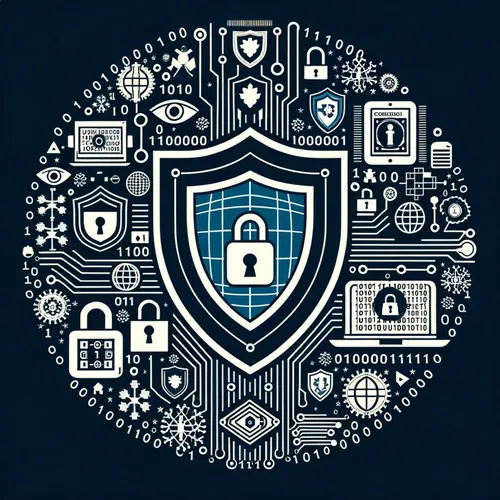Cyber Smackdown: US Strikes Back as China Hacks On - Whos Winning the Spy vs Spy Showdown?
- Author
- Quiet. Please
- Published
- Sun 31 Aug 2025
- Episode Link
- https://www.spreaker.com/episode/cyber-smackdown-us-strikes-back-as-china-hacks-on-whos-winning-the-spy-vs-spy-showdown--67573707
This is your Tech Shield: US vs China Updates podcast.
Hey listeners, it’s Ting, your not-so-humble guru on all things China, Cyber, and Code—coming at you with this week’s latest from the great cyber chessboard: Tech Shield, US versus China edition. Buckle up, because if you thought August was sleepy, think again. The cyber world’s been pinging louder than my VPN on a slow Starbucks Wi-Fi.
Let’s start with the fresh-from-the-fire headlines. US officials are busier than ever, with the FBI revealing the Salt Typhoon attacks against telecoms were way bigger than anyone thought. This isn’t just script kiddie nonsense—this is industrial-scale snooping with serious national security teeth. Chinese advanced persistent threat groups, aka APTs, are at the heart of multiple new espionage campaigns. Western governments—including our own—have gone almost public in shaming Beijing, pressing for better intelligence-sharing between agencies and with private players. If cybersecurity is a cat-and-mouse game, the mice just got fancier traps.
Speaking of traps, CISA just dropped two brand-new industrial control system advisories. That’s right, they’re patching up software in everything from power plants to your local water utility, and let’s be honest, nobody wants the lights or the tap water controlled by someone in Shenzhen. The real kicker? A joint threat hunt from CISA and the US Coast Guard at a critical infrastructure site found plenty of cyber hygiene bugs—think expired certificates, legacy passwords, and more hidden holes than a Swiss cheese router. The message from CISA: patch fast or get pwned.
On top of those reactive moves, the US is getting proactive, too. CISA, teaming up with Sandia National Labs, has rolled out Thorium—a shiny new automation platform to turbocharge analysis of incoming malware. It’s like caffeine for cyber defenders, letting small teams handle seas of suspicious files. Microsoft’s bounty programs keep growing—a staggering $17 million paid out to volunteer bug-hunters worldwide. These white hats are now a core part of our cyber immune system, patching thousands of vulnerabilities before Beijing’s best even wake up.
Industry isn’t sitting idle, either. Def Con projects are spinning up free open-source tools for smaller, underfunded water utilities—a sector that, by the way, has been especially exposed after recent attacks on Europe’s water systems. Meanwhile, the Federal Aviation Administration is demanding stronger cyber standards for drones and unmanned aircraft, since no one wants UAVs doing Beijing’s bidding by remote.
Here’s the million-renminbi question: Is all this enough? Listen, cyber-defense isn’t about flipping a switch; it’s about whack-a-mole, but with smarter moles every month. Cross-functional teamwork is still a hot mess—IT guys over here, OT engineers over there, everyone pointing at each other when things pop off. Asset maps look good on PowerPoint, but attackers are moving faster, especially with AI in the mix. Persistent gaps remain: incomplete operational visibility, weak data flow control, and too much focus on ‘shiny’ new tech over basic cyber hygiene.
Expert verdict? Progress, yes—but the arms race is getting faster and messier. The hope is with relentless patching, smarter automation, and tighter collaboration, the US can stay one lucky step ahead. But as one wise CISO put it, the attackers only need to be lucky once—defenders have to be lucky every time.
Listeners, that’s the week’s cyber frontline—Tech Shield: US vs China. Don’t forget to patch early, test often, and never click suspicious links, unless you want me crawling your inbox next week. Thanks for tuning in, don’t forget to subscribe, and keep your cyber shields up.
This has been a quiet please production, for more check out quiet please dot ai.
For more
